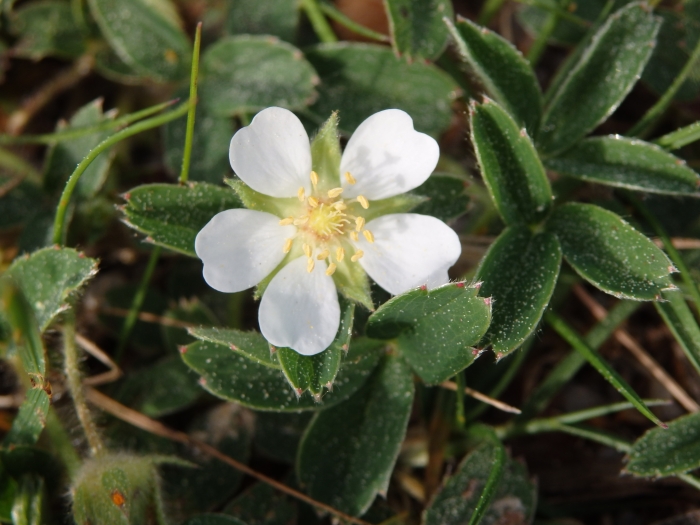Shrubby Cinquefoil
(Potentilla montana)
Shrubby Cinquefoil (Potentilla montana)
/
/

Carminda Santos
CC BY 4.0
Image By:
Carminda Santos
Recorded By:
Copyright:
CC BY 4.0
Copyright Notice:
Photo by: Carminda Santos | License Type: CC BY 4.0 | License URL: http://creativecommons.org/licenses/by/4.0/ | Rights Holder: Carminda Santos | Publisher: iNaturalist | Date Created: 2021-03-28T17:48:39-07:00 |








































































Estimated Native Range
Summary
Potentilla montana, commonly known as Shrubby Cinquefoil, is a deciduous shrub native to a wide range of habitats including rocky alpine regions, subarctic areas, and dry scrublands in Southwestern Europe and North Africa. It typically grows to a height and width of 2-4 feet (0.6-1.2 meters), forming a mound of fine-textured foliage. The plant is characterized by its pinnate leaves and showy, buttercup-like flowers, which can vary in color from white to yellow, and less commonly, pink. The flowering season extends from late spring through summer, providing a long period of visual interest.
Shrubby Cinquefoil is valued for its hardiness, low maintenance, and the extended blooming period of its flowers, which are attractive to pollinators. It is commonly used in border plantings, rock gardens, and as ground cover. This plant thrives in well-drained soils and is tolerant of a range of soil types, from clay to loam. It is drought-tolerant once established, making it suitable for xeriscaping. While generally disease-resistant, it can be susceptible to leaf spot and powdery mildew in humid conditions. There are numerous cultivars available, offering various flower colors and plant sizes to suit different garden designs.CC BY-SA 4.0
Shrubby Cinquefoil is valued for its hardiness, low maintenance, and the extended blooming period of its flowers, which are attractive to pollinators. It is commonly used in border plantings, rock gardens, and as ground cover. This plant thrives in well-drained soils and is tolerant of a range of soil types, from clay to loam. It is drought-tolerant once established, making it suitable for xeriscaping. While generally disease-resistant, it can be susceptible to leaf spot and powdery mildew in humid conditions. There are numerous cultivars available, offering various flower colors and plant sizes to suit different garden designs.CC BY-SA 4.0
Plant Description
- Plant Type: Shrub
- Height: 2-4 feet
- Width: 2-4 feet
- Growth Rate: Moderate
- Flower Color: White
- Flowering Season: Spring, Summer
- Leaf Retention: Deciduous
Growth Requirements
- Sun: Full Sun, Part Shade
- Water: Low
- Drainage: Medium
Common Uses
Bee Garden, Butterfly Garden, Deer Resistant, Groundcover, Low Maintenance, Rabbit Resistant
Natural Habitat
native to a wide range of habitats including rocky alpine regions, subarctic areas, and dry scrublands in Southwestern Europe and North Africa
Other Names
Common Names: Berg-Fingerkraut
Scientific Names: , Potentilla nitida, Potentilla montana, Potentilla splendens, Potentilla vaillantii, Fragaria vaillantii, Dynamidium montanum, Fraga vaillantii, Fragariastrum montanum, Potentilla alba var. splendens
GBIF Accepted Name: Potentilla montana Brot.